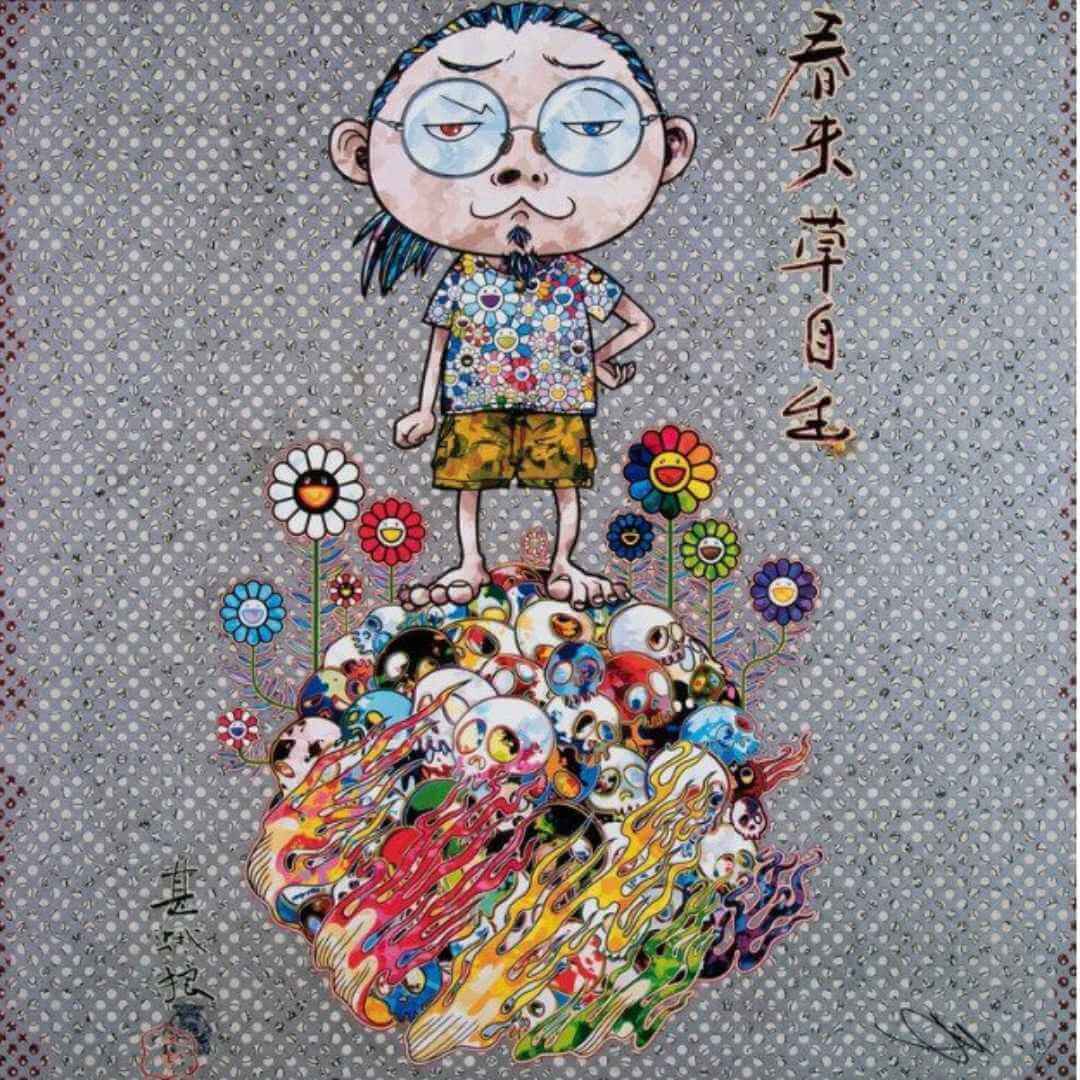Takashi Murakami is a Japanese contemporary artist and the founder of the “Superflat” art movement. He is best known for his vibrant, colorful and playful style, which blends traditional Japanese art with contemporary pop culture elements. Murakami has been widely recognized for his contributions to the art world, and his works have been displayed in museums and exhibitions around the world.
As the creator of the “Superflat” movement, Murakami understands that art can’t be separated into “high” and “low,” just as art can’t be divorced from everyday life. So, with that in mind, let’s take a closer look at this contemporary artist and try to see things from his perspective.
Biography
Early Life
Takashi Murakami is a Japanese contemporary artist and entrepreneur. He was born in Tokyo, Japan in 1962. He is known for his colorful and playful pop art-style paintings and sculptures that often feature motifs inspired by Japanese anime, manga, and otaku culture. He is also famous for creating a new art movement called “Superflat,” which is characterized by the use of flat, two-dimensional imagery inspired by traditional Japanese art and pop culture.
He grew up in a working-class family and showed an early interest in manga and anime. After studying traditional Japanese painting in college, he began to experiment with new styles and techniques. In fact, Murakami initially wanted to become an animator but wound up transforming the modern art world instead. Funny how fate can step in and change one’s plans.
Education
Murakami attended the Tokyo National University of Fine Arts and Music and graduated with a bachelor’s degree in 1986. He would continue his education and earn a Master’s degree in 1988 and a Ph.D. in 1993.
During his schooling, Murakami studied “Nihonga,” aka the traditional style of Japanese artwork and painting. Nihonga pieces, much like contemporary Manga and anime, use flat imagery with bold colors and strong outlines. A perfect example of this traditional style is the Great Wave Off Kanagawa, which was created in 1831.
Although he studied Nihonga, Murakami became disillusioned by it, thanks to the art industry at the time and political influences that seemed to pit both high and low art against each other. This disillusionment caused Murakami to break out and create pieces that functioned more as satire than original artwork. The goal was to create provocative imagery that both celebrated Japanese culture and decried its “Westernization.”
Contemporary Art & Superflat Movement
Throughout his career, Murakami has chosen to push boundaries and create art that is both celebrated and denounced within the art world. One of his earliest and most famous pieces, Hiropon, illustrates this dynamic perfectly.
Hiropon is a sculpture of a buxom anime-style cartoon character shooting breast milk out of one nipple and catching it in the other. The milk creates a half-circle around the character as if suspended in time. This piece isn’t meant to be explicit or pornographic but instead illustrates the innate perversion of trends like Otaku, which celebrate violence and sexuality to an almost extreme degree.
Hiropon’s spiritual successor, My Lonesome Cowboy, is even more sexually charged, as it shows a naked, Dragonball Z-type character shooting a massive stream of semen from the tip of his erect penis. The stream rises up and whips around in a spiral shape as if controlled by the character himself.
Both sculptures illustrate how Western influence has shaped contemporary Japanese art and entertainment. Many Westerners view Japanese culture and residents as sexual rather than unique and honorable.
Although Murakami’s most famous pieces are three-dimensional, his impact on modern art is based on his “Superflat” theory. According to Murakami, the distinction between high and low art is so narrow that it’s practically a flat line. After all, why is something like the Great Wave considered high art while an anime cartoon isn’t?
One could argue that the commodification of artwork is what makes it “low,” but Murakami suggests the opposite. Something isn’t “art” just because it’s unique and hard to replicate. Art exists everywhere if you know where to look, and even Manga and anime can be considered art.
Superflat also referred to the cultural and artistic stagnation that has plagued Japanese contemporary artists for decades. Basically, Murakami believes that Japanese culture is turning into a flat line, and his work tries to illustrate the dangers and setbacks that come from such repression.
Hiropon Factory
The Hiropon Factory was a studio and production company established by Takashi Murakami in the 1990s. It was part of his larger project to challenge the boundaries between fine art and popular culture and to create a new art movement that he called “Superflat.” At the Hiropon Factory, Murakami and his team of artists and assistants produced large-scale, brightly colored and intricately detailed paintings, sculptures, and other works. The Hiropon Factory was also responsible for creating a number of Murakami’s iconic characters, such as “Mr. DOB” and “Kaikai & Kiki.” The Hiropon Factory became a major hub of creativity and experimentation for Murakami and the Superflat movement, and its legacy continues to influence the art world today.
To drive this point home and to spur conversations between artists and patrons, Murakami opened the Hiropon factory in 1996. The factory uses an atelier system, meaning that artists and craftspeople produce artwork that is then attributed to the original artist (aka, Murakami). This system has been in use for centuries, but it’s mostly reserved for entertainment, such as anime shows and Manga comics.
NFTs
While the fervor surrounding NFTs has diminished since its height in 2021, these pieces are still a viable option for artists looking to commodify their work while still making it unique and intrinsically valuable. One could argue that NFTs are practically made for artists like Murakami since they represent virtually everything he does.
Murakami first announced an NFT project called Murakami.Flowers back in April 2021. However, because he didn’t really know much about NFTs, he paused the project until the start of 2022. That said, because the NFT market is still reeling from a substantial drop in early 2022, this project has yet to be finished or released.
The Legacy of Takashi Murakami
The Superflat movement is unique to Japanese culture because so much Japanese artwork uses similar techniques and has a distinct look. So, while other cultures may celebrate a wide range of mediums, textures, and influences, Japan seems to have found it’s aesthetic and is sticking with it.
So, Murakami’s legacy is his ability to show individuals that high and low art can coexist and that it’s ridiculous to pretend that they’re any different from each other. Murakami’s pieces look somewhat cartoonish and “childish,” but that’s all by design. While his most recent works are not as provocative as his earlier sculptures, they’re still adding context to the idea of Superflat.
Overall, Murakami’s legacy is hard to pinpoint right now because he’s still producing artwork. However, we believe that he will ultimately be recognized as a national patriot who wanted to hold a mirror to contemporary Japanese society so that it may experience growth and change for the better. Whether Murakami is successful in that endeavor is yet to be seen.
Famous Works of Takashi Murakami
Time Bokan (Camouflage Moss Green)
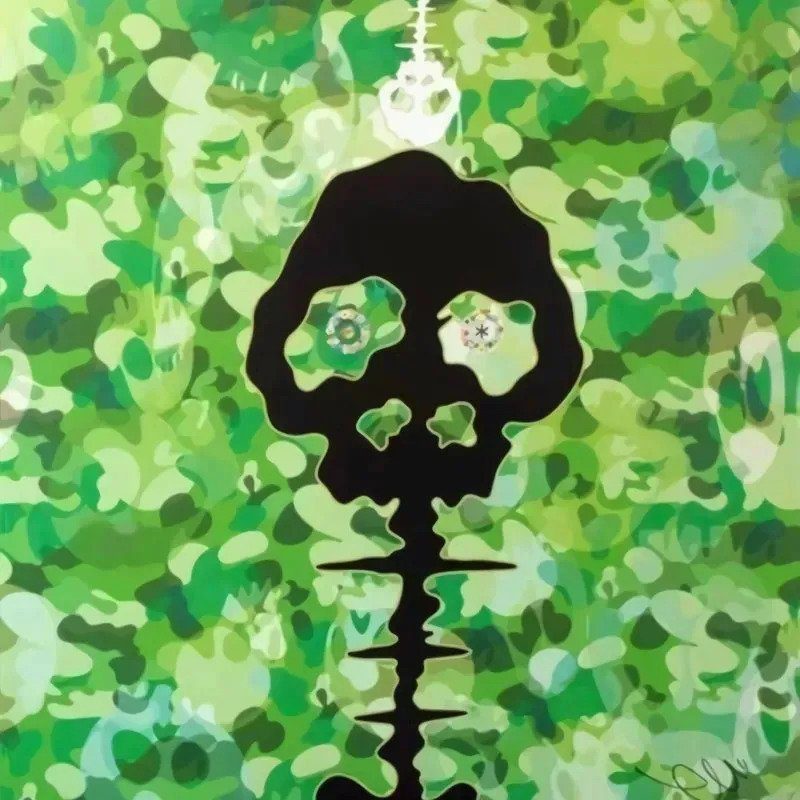
This piece features a black silhouetted skull and spinal cord (with a smaller white skeleton inverted above) illustrated against a backdrop of green camouflage. Time Bokan was completed in 2011, and was part of a set of 300 limited-edition pieces. So, this artwork comes with a signature and a number to verify its authenticity.
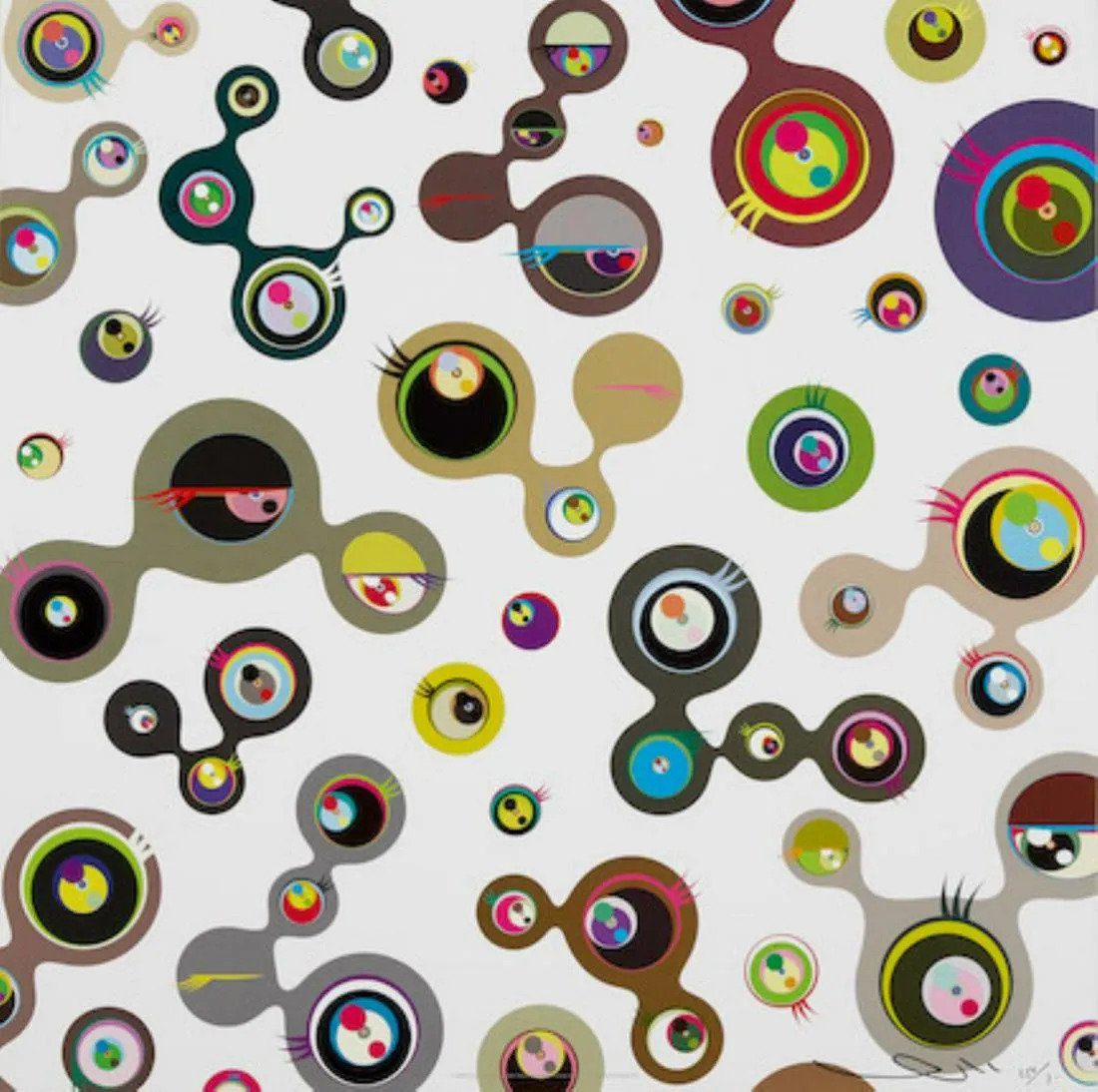
Here is another work that was part of a 300-piece limited-edition set. Jellyfish Eyes was completed in 2006, and features a series of illustrated eyeballs, each with three (or more) eyelashes sticking out. Some of the eyes are floating by themselves, while others are connected via amorphous shapes that provide a darker background.
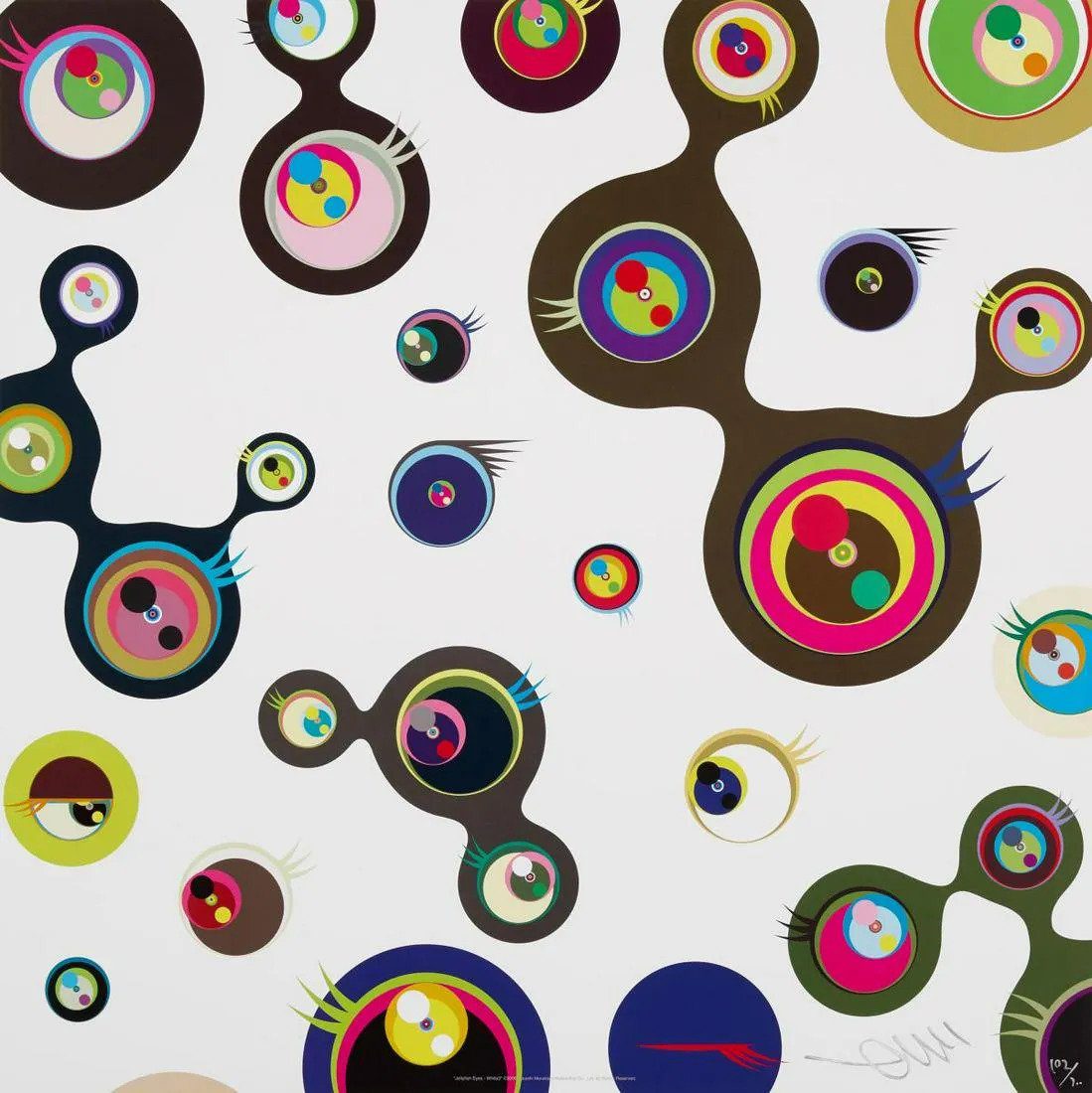
This artwork is part of the Jellyfish Eyes White set, so it continues the motif of illustrated eyeballs of different shapes and colors, creating a mosaic across a white background.
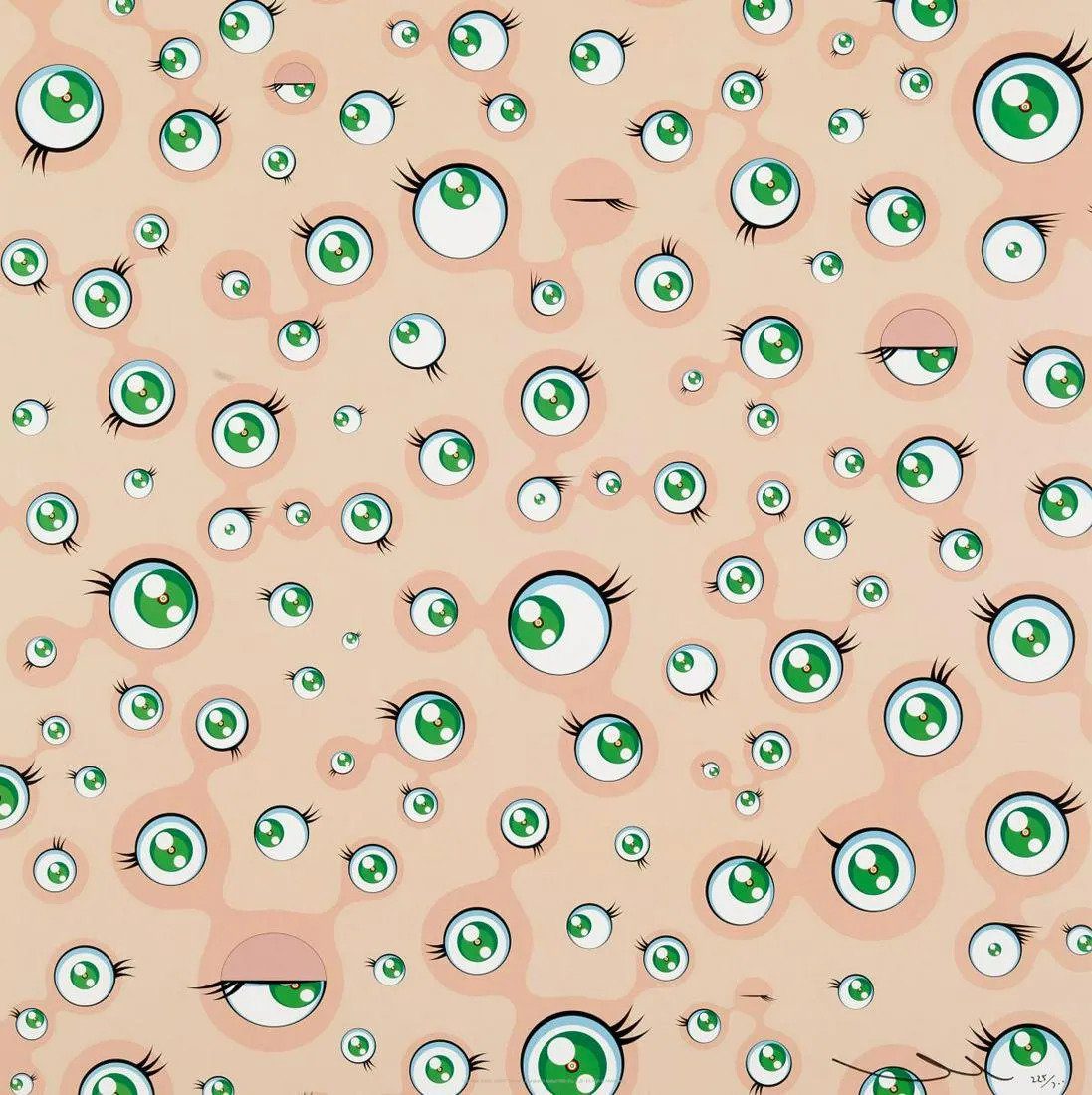
This piece is a precursor to the white Jellyfish Eyes series. Completed in 2001, this artwork features a denser collection of eyeballs, although each one has the same color composition of a white sclera and a green iris. As with the white series, each eye has at least three lashes, although several of them have four. Some of the eyes are closed, but the majority are open, and they’re set against an orange-ish pink background.
Untitled IV From We Are the Jocular
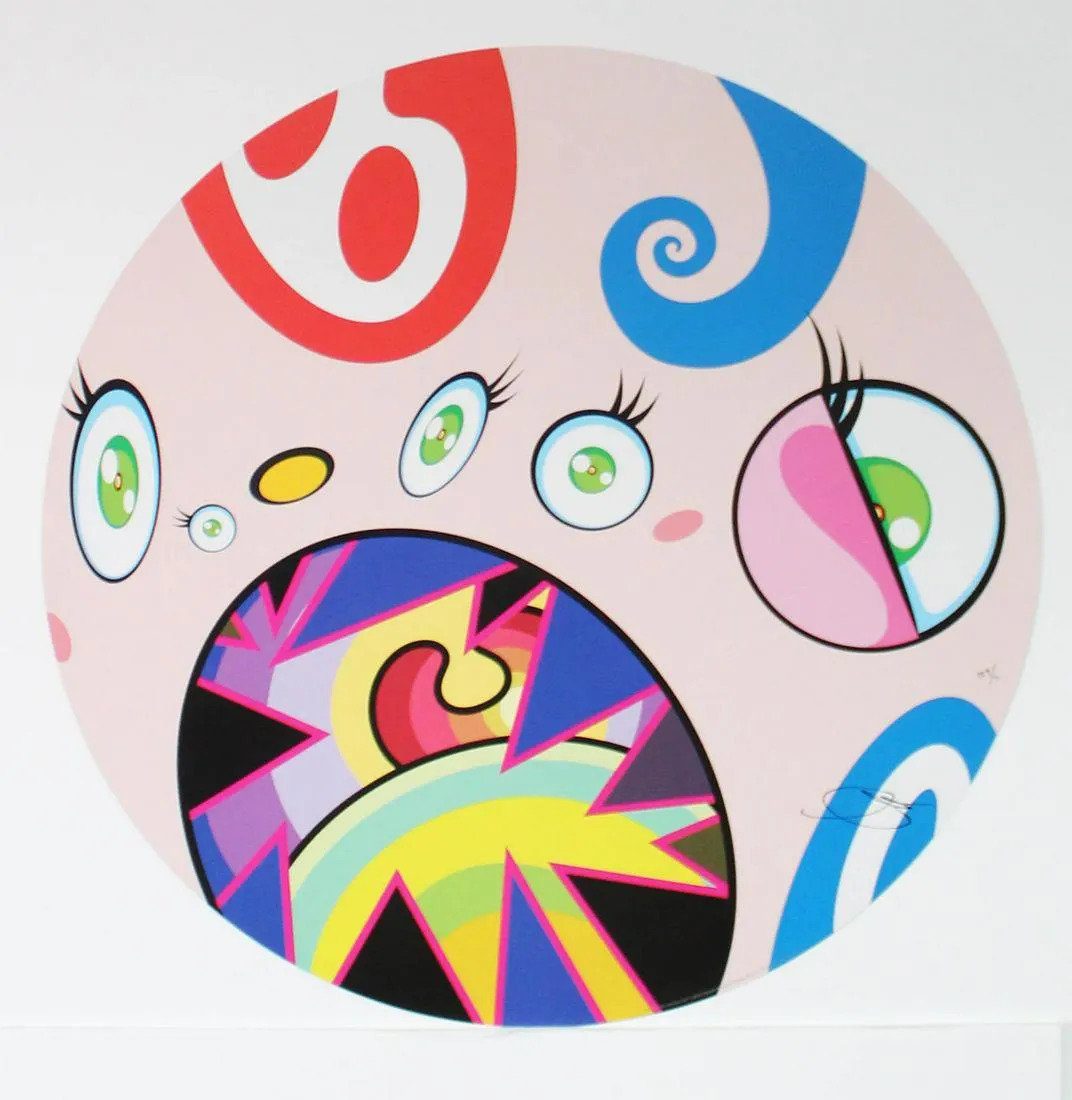
Here we have a collage of different shapes and images brought together in a circular frame. The artist has included eyes similar to those in Jellyfish Eyes, along with colorful shapes and patterns. One element is a half-circle with sharp triangles sticking out and the shape of a uvula behind them.
If you want to buy any of these works or looking for any other artwork by Takashi Murakami, call us now at 267-687-8378 or leave an inquiry on Dane Fine Art. We are happy to help you find the artwork you are looking for.

